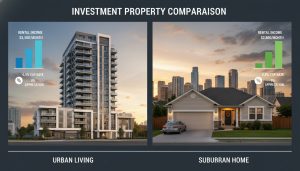How do interest rates affect buyer demand?
Shocking Truth: Rising interest rates can slam the brakes on buyer demand — here’s exactly how you profit from timing and market strategy.
Quick answer
Interest rates shape buyer demand directly. When mortgage rates rise, monthly payments climb, affordability drops, and the pool of qualified buyers shrinks. Lower rates do the opposite: more buyers qualify, competition heats up, and prices can rise. This link is the core of any timing and market strategy for real estate.
Why interest rates move buyer demand
Interest rates change the math. Buyers buy homes with mortgages. Higher rates increase the payment on the same loan amount. Higher payments mean some buyers can no longer qualify or decide the monthly cost isn’t worth it. That reduces demand immediately.
Search keywords: interest rates affect buyer demand, interest rates and housing demand, mortgage rates buyer demand.

Four ways interest rates change buyer behavior
- Affordability: A 1% rise can cut what a buyer can afford by tens of thousands. Fewer buyers can afford the same homes.
- Qualification: Lenders tighten or relax qualification rules based on rate climate. Higher rates often mean stricter debt-to-income thresholds.
- Urgency: Falling rates create urgency — buyers rush to lock in cheaper payments. Rising rates create hesitation — buyers wait or leave the market.
- Competition and price movement: Low rates fuel multiple-offer situations and price growth. High rates cool the market and extend days on market.
Timing & market strategy that wins
This is where most agents fail: they guess. Use data and clear rules.
- Track rates and inventory together. Rising rates plus increasing inventory = buyer advantage. Rising rates plus shrinking inventory = short-term sellers’ edge.
- Adjust pricing strategy fast. In a rising-rate window, price competitively to attract the smaller buyer pool. In a falling-rate window, price for demand and tighter offer timelines.
- Finance-savvy marketing: Show monthly payment scenarios at several rate levels. Buyers respond to monthly cost, not list price.
- Be ready with options. Offer lender contacts, rate lock guidance, and clear cost breakdowns so buyers can act fast when rates change.
What buyers should do
- Run affordability at multiple rate points before deciding.
- Lock when a sensible rate appears and the purchase timeline is short.
- Consider adjustable-rate strategies only if you understand the reset risk.
What sellers should do
- Don’t assume a single buyer profile. Show payments and financing options.
- If rates are rising, expect price resistance. Counter with staged incentives: closing-credit, flexible closing, or mortgage buy-downs.

Final word — timing beats guessing
Interest rates are measurable. Buyer demand responds fast. Use the facts to set price, market smart, and present financing clearly. That’s the real timing and market strategy that wins deals.
Ready to act on timing and market strategy in your neighborhood? Contact local expert Tony Sousa for a clear plan: tony@sousasells.ca • 416-477-2620 • https://www.sousasells.ca





















